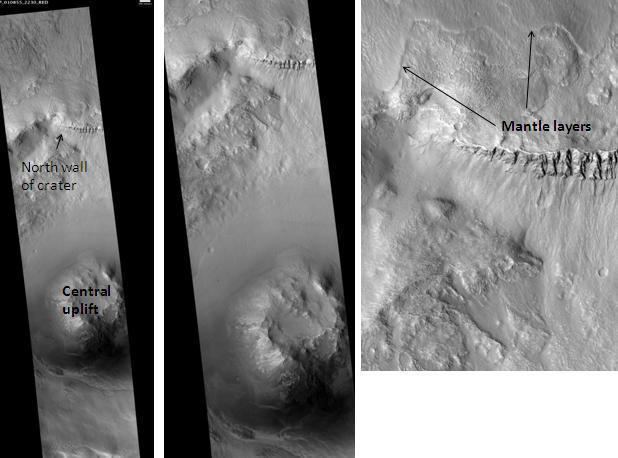Planet Mars | Diameter 17.5 km | |
 | ||
Eponym Mohawk, New York, United States | ||
Mohawk Crater is an impact crater in the Elysium quadrangle of Mars, located at 43.2° N and 5.4° W. It is 17.5 km in diameter and was named after a town in New York.
Mantle layers are present near the crater. A smooth mantle covers much of Mars. Some parts are eroded, revealing rough surfaces. Some parts possess layers. It’s generally accepted that mantle is ice-rich dust that fell from the sky as snow and ice-coated dust grains during a different climate.
Impact craters generally have a rim with ejecta around them, in contrast volcanic craters usually do not have a rim or ejecta deposits. As craters get larger (greater than 10 km in diameter) they usually have a central peak. The peak is caused by a rebound of the crater floor following the impact.
Why are Craters important?
The density of impact craters is used to determine the surface ages of Mars and other solar system bodies. The older the surface, the more craters present. Crater shapes can reveal the presence of ground ice.
On Mars, heat from impact melts ice in the ground. The heat from thousands of impacts especially early in the history of Mars may have helped life to survive. Impacts may have melted ice and kept the region around the crater warm for thousands of years.
The area around craters may be rich in minerals. Water from the melting ice dissolves minerals, and then deposits them in cracks or faults that were produced with the impact. This process, called hydrothermal alteration, is a major way in which ore deposits are produced. The area around Martian craters may be rich in useful ores for the future colonization of Mars.
